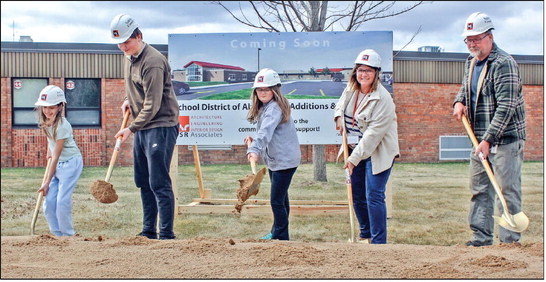Non-resident grouse hunting, part two


Last week I touched on non-resident grouse hunting pressure in Wisconsin. The theory my friends laid out centers around cost and duration of licenses for hunting small game in several states compared to Wisconsin.
“I agree that there should be a time limit for a non-resident licenses like the Dakotas, and that Wisconsin’s license is priced too low,” Tim Perkins told me. “And I would like someone to explain why the bag limit on pheasant is two, and I have to buy a pheasant stamp, which are mostly pen raised birds in Wisconsin, released by the state. Yet the limit for grouse is five birds with no stamp? Why do we need to buy a turkey habitat stamp when there are turkeys everywhere? The bag limit should be reduced to three grouse per day.”
“Maybe there should be a grouse stamp instead of the others and use that money to create more areas to hunt grouse,” he added.
“I saw a lot more out-of-state license plates, which has been trending for a decade or more,” a grouse hunter, asking to remain anonymous, said. “It seemed more pronounced this fall and I saw vehicles parked at MFL/FCL properties that previously I never saw vehicles at. Between that and the increased UTV traffic, there have been some big changes in recent years.”
Western state big game hunters started uttering these same sentiments a few years ago. One of those voices holds some renown in the national hunting community. Mapping applications like OnX and even WDNR electronic mapping make finding places like MFL/FCL properties easy for everyone.
In talking with a lot of non-resident hunters, they say they come to Wisconsin because we have grouse and land to hunt. Not one ever mentioned the cost of a license or the time they can stay and hunt. Yet hunters staying longer than one week clearly bypass Michigan, which is closer to home for most, has birds, and land to hunt.
Bottom line, if you don’t have birds to hunt and you hunt birds - you travel. Same with elk and mule deer hunters. Wisconsin hunters travel too for pheasant, sharptails, elk, etc.
All this pressure means tourism dollars. The owners of VRBO’s, resorts, hotels, campgrounds, restaurants, grocery stores, gas stations, and possibly a bar or two welcome those hunters. No economic statistics exist for the effects of grouse hunting on the Wisconsin economy, but Park Falls calls itself the Ruffed Grouse Capital of the World for a reason. And several out of state grouse hunters told me that they stop in a few of our area businesses on the way to camp and on the way home each year. So, is doing anything to reduce that business fair or ethical? Does the answer change if that business volume affects the resource? Does hunting pressure negatively affect the resource? The last substantial research on human pressure affecting grouse, done by the late Gordon Gullion, found that humans are inefficient predators of ruffed grouse. The only time we negatively affect the grouse population comes from flushing grouse from their winter snow roost, exposing them to the eyes of their primary predators.
A lot of Gullion’s research happened in the 1960s, thirty years before UTVs. Road hunting out the window of vehicles happened a lot in the 1960s - still does. I’ll admit that road hunting can lay waste to a family group of grouse in the early season. And I’ll concede that a lot of hunting pressure pushes grouse out of the more accessible areas of their territory, possibly to areas that their primary predators gain an advantage. Yet, no research since Gullion’s exist to support any theories on evolving human pressure.
Still more and more hunters are either jumping on this wagon or coming to the conclusion from their own observations that more pressure on grouse coverts exist than just five years ago and they see non-residents creating this.
Recently, a couple national outdoor media outlets addressed these same feelings and economics revolving around non-resident hunting, the ethics of pricing for non-resident licenses and pressure on public lands especially in Western states. Where does this end? Does hunting lose because of this?
The farther one digs, the more questions arise. I’m betting Wisconsin grouse hunters’ sentiments are a reaction to a different problem. If quality habitat equals abundant wildlife populations, why do hunters need to travel to find wildlife? Why are a couple bell weather species in Wisconsin causing concern in the first place?
Through a
Decoy’s
E
ye



